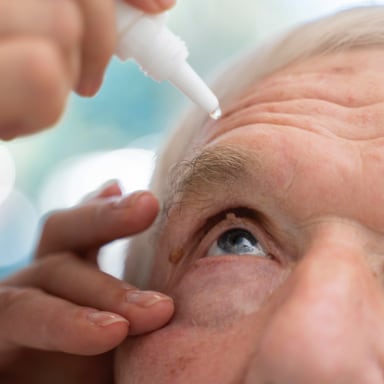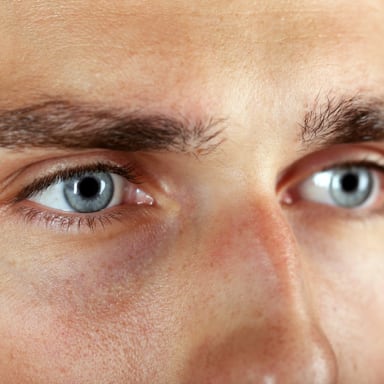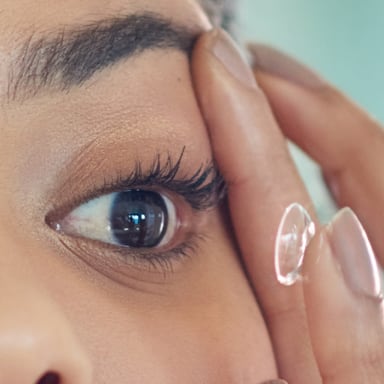Macular degeneration is one of the leading causes of vision loss, particularly in older adults. While it doesn’t always result in complete blindness, macular degeneration can severely impact a person’s central vision, affecting daily tasks like reading, driving, or recognizing faces. One of the most common questions people have is, “How fast does macular degeneration progress?” The answer depends on the type of macular degeneration and individual factors, but early detection and treatment can significantly affect the outcome.
In this blog, we’ll explore what macular degeneration is, how it progresses, and what you should do if you notice symptoms.
What Is Macular Degeneration?
Macular degeneration, or age-related macular degeneration (AMD), is an eye disease that affects the macula, a small part of the retina responsible for central vision. The macula allows us to see fine details clearly, such as text on a page or facial features. When the macula deteriorates, central vision becomes blurred or distorted.
There are two primary types of macular degeneration:
- Dry Macular Degeneration: The most common form, accounting for about 80-90% of AMD cases. This type occurs when the macula thins over time due to aging, leading to the gradual loss of central vision.
- Wet Macular Degeneration: Less common but more severe, wet AMD occurs when abnormal blood vessels grow under the retina, leaking blood and fluid. This can cause rapid and significant vision loss if not treated quickly.
How Fast Does Macular Degeneration Progress?
The rate at which macular degeneration progresses depends on the type of AMD a person has.
Dry Macular Degeneration
Dry AMD tends to progress slowly over several years. Many people may not notice significant symptoms in the early stages, but as the disease advances, central vision becomes increasingly affected. The condition is divided into three stages:
- Early Stage: In the early stage, there are often no noticeable symptoms. However, small yellow deposits called drusen begin to form under the retina. These drusen are an early warning sign that AMD may develop.
- Intermediate Stage: As dry AMD progresses to the intermediate stage, drusen grow larger, and some people begin to notice mild vision changes. You might experience slight blurriness or difficulty seeing in low light, but central vision is still relatively functional.
- Late Stage: At this point, significant damage has occurred to the macula, leading to noticeable vision loss. You may have blind spots or central blurring that affects your ability to read, drive, or recognize faces.
The progression from early to late-stage dry AMD can take several years or even decades. However, regular eye exams are crucial for monitoring the condition and catching it before it causes significant vision impairment.
Wet Macular Degeneration
Wet AMD progresses much faster than dry AMD. It can develop suddenly and cause severe vision loss in a matter of weeks or months. The abnormal blood vessels that grow in wet AMD can leak blood or fluid under the retina, leading to scarring of the macula. This form of AMD requires prompt medical treatment to prevent rapid and permanent vision loss.
Without treatment, wet AMD can quickly lead to significant central vision loss, leaving only peripheral vision intact. If caught early, treatments like anti-VEGF injections can help control the growth of abnormal blood vessels and slow or stop the progression of the disease.
The Process of Macular Degeneration
Macular degeneration begins when cells in the macula start to deteriorate. In dry AMD, this deterioration is often linked to the buildup of drusen, small yellow deposits of fatty protein. These deposits form under the retina, interfering with the function of macular cells and causing them to gradually break down. Over time, the loss of these cells leads to blurred or distorted central vision.
In wet AMD, the process is more aggressive. The body begins to form abnormal blood vessels in an attempt to supply the retina with more oxygen. Unfortunately, these new blood vessels are fragile and tend to leak blood or fluid into the retina, causing rapid damage to the macula. This leakage can result in scarring, further degrading central vision.
Symptoms of Macular Degeneration
The symptoms of macular degeneration can vary depending on the stage of the disease and whether it’s the dry or wet form. Common symptoms include:
- Blurry central vision: Difficulty seeing details in the center of your field of vision, making reading or recognizing faces harder.
- Distorted vision: Straight lines may appear wavy or distorted, a symptom often associated with wet AMD.
- Dark or empty areas: You may notice dark, blank spots in the center of your vision, particularly as the disease advances.
- Difficulty seeing in low light: Tasks like reading or navigating in dim environments may become more challenging.
- Faded colors: You might find that colors appear less vibrant or bright than before.
If you’re experiencing any of these symptoms, it’s essential to schedule an eye exam as soon as possible. Early detection is key to managing macular degeneration and preserving as much vision as possible.
When to See an Eye Doctor
If you’re over the age of 50 or have a family history of AMD, regular comprehensive eye exams are crucial. Macular degeneration can be slow to develop, and many people don’t notice symptoms until significant vision loss has occurred. Annual exams allow for early detection and treatment.
If you start noticing changes in your vision—particularly blurriness, wavy lines, or dark spots—don’t wait. These symptoms could indicate the onset of macular degeneration, and the sooner it’s diagnosed, the better your chances of slowing its progression.
Managing Macular Degeneration
While there’s no cure for macular degeneration, certain lifestyle changes and treatments can slow the progression of the disease:
- Diet and Nutrition: Studies suggest that a diet rich in leafy greens, fruits, and omega-3 fatty acids can help protect eye health. Specific vitamins, like lutein and zeaxanthin, are beneficial for maintaining macular function.
- Anti-VEGF Injections: For wet AMD, anti-VEGF injections can help control abnormal blood vessel growth, slowing vision loss.
- Low Vision Aids: For those already experiencing vision loss, special devices like magnifying glasses or electronic readers can help maximize remaining vision.
Conclusion
Macular degeneration can progress slowly over several years or more rapidly, depending on the type and stage. Dry AMD often develops gradually, while wet AMD can lead to sudden, severe vision loss. If you’re noticing symptoms such as blurred or distorted vision, it’s essential to see an eye doctor immediately for a thorough evaluation and potential treatment.
At Eye Sea Davis Optometry, we are committed to providing comprehensive eye care and monitoring for macular degeneration. If you’re concerned about changes in your vision, schedule an appointment today to discuss your eye health and treatment options. Early detection is key to preserving your sight!



















